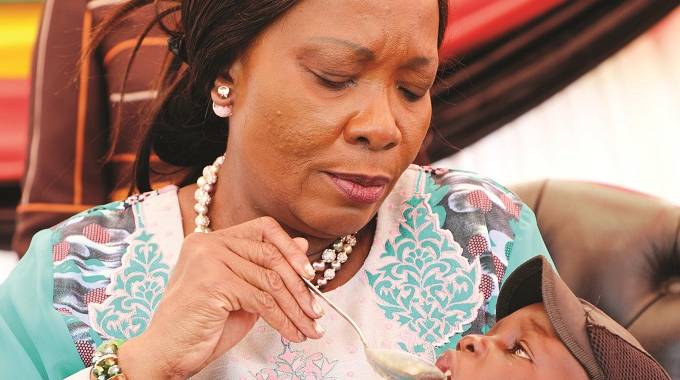Child stunted growth worry in Matabeleland North

Auxilia Katongomara, Chronicle Reporter
TWENTY-SEVEN percent of children in Matabeleland North are suffering from stunted growth due to malnutrition caused by recurrent droughts and other natural disasters in the province, an official has said.
This has resulted in Government and other partners scaling up nutrition interventions such as iron and folate supplementation, supplementary feeding for pregnant women and universal salt iodisation.
Matabeleland North Provincial Medical Director, Dr Pugie Chimberengwa, said they were working hard to have a single digit in the percentage of children with stunted growth.
Dr Chimberengwa said this during the launch of a nationwide supplementary feeding programme by the First Lady Auxilia Mnangagwa in Ntabazinduna last week.
“The rates of stunting (that is, children who are very short for their age) have declined over the years. As a province, we are intensifying our efforts towards achieving single digit rates or at least rates that are below 20 percent.
“Currently, our rates for stunting are very high, with Nkayi and Umguza being in the lead at 27 out of every 100 children, followed by Bubi at 26 out of every 100 children between 6 and 23 months who are very short for their age,” said Dr Chimberengwa.
He said the Ministry of Health and Child Care is implementing targeted supplementary feeding as a component of the Integrated Management of Acute Malnutrition services, which offer nutritional and medical support for moderately malnourished children aged 6 to 59 months.
“Matabeleland North province has not been spared from the recurrent droughts and other natural disasters such as floods (especially in Tsholotsho). As a result, the community which relies mainly on agriculture becomes highly food insecure during the peak hunger season.
Malnutrition cases also peak during the hunger season. Efforts have been made by Government and its development partners to scale up nutrition interventions that have been shown to result in great changes in nutrition status of populations,” he said.
Dr Chimberengwa said some of the interventions include; iron and folate supplementation, supplementary feeding for pregnant women; universal salt iodisation, promotion of early and exclusive breastfeeding for 6 months and continued breastfeeding up to 24 months, timely introduction of complementary foods; provision of additional complementary food supplements for insecure population, Vitamin A supplementation and management of acute malnutrition.
“Although these interventions are in place, there is a need to further intensify their implementation so that the most vulnerable segments of the population are reached” he said.
The First Lady, Amai Mnangagwa, launched the supplementary feeding scheme in Ntabazinduna aimed at curbing malnutrition and stunting in children aged between 6 and 59 months in Matabeleland North province by donating 15 tonnes of corn soya blend porridge to the province.
Speaking at the launch of the programme, Amai Mnangagwa said she was motivated by the realisation that children in that age group are exposed to poor feeding practices leading to malnutrition, stunting and death.
Dr Chimberengwa commended Amai Mnangagwa for the supplementary feeding initiative saying it will go a long way in alleviating malnutrition in the province.
“We welcome it for the public health benefit of our children and the community at large. This will go a long way in reducing cases of both acute and chronic malnutrition.
“Your Excellency, we are grateful for your thoughtfulness and look forward to continuously engaging you as we work towards a Zimbabwe that is free from hunger and malnutrition,” he said. — @AuxiliaK.










Comments